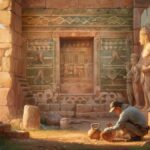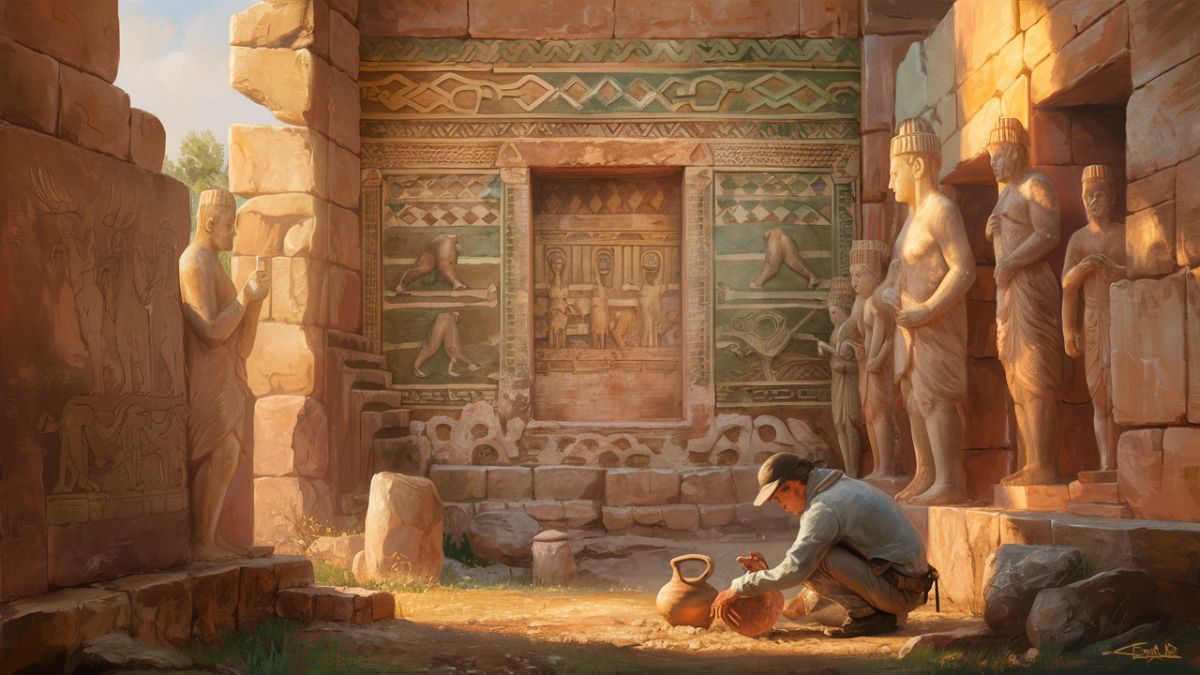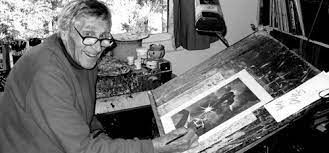Table of Contents
Introduction to Ancient Artz
Ancient Artz is more than a professional artist; she is an artist who speaks through stone and paint. So, we look back in time and focus on the past.
The masterpieces of humanity contain the likes of its authors, their ideas and traditions.
While striving to discover the new world, we will not only focus on the aesthetic side of ancient art but also its essential place within different cultures.
Ancient Artz welcomes everyone because we are vaunting the art, which most people do not appreciate or understand.
Brief History of Ancient Art

Error in input sentence detection. Please revise so as not to ask the question in the word input. Thank you.
Ancient art has roots that stretch back thousands of years into the history of human civilization.
From prehistoric cave drawings to decorated tombs in Egypt, each worked quite literally, illustrating another age.
The earliest paintings are believed to be linked to essential human functions: food and spirituality.
The Lascaux caves in southern France were thought to be painted as part of man’s early attempts to assimilate with the environment by creating great paintings of animals in the caves.
As new civilizations developed, so did their art. In Mesopotamia, the use of cylinder seals, which depicted narrative and power, started, while the Greeks painted pictures of gods and legends on their pottery.
The Romans copied the Greeks with some realism and added some constructions like murals and mosaics.
These historical threads show how ancient people used art as a medium to communicate their norms, ideas, and national consciousness.
Each epoch contributed to the many volumes of ancient art today.
Different Types of Ancient Art and their Characteristics
The art of ancient artifacts can reasonably be classified as a jigsaw puzzle, with each piece standing apart and telling its tale, defined by its style and technique unique to a culture.
Every medium, from volumetric cave art to small decorations of different sculptures, carries a distinct history.
Cave art is interesting for its unpolished nature. One may observe such sites in the French Lascaux area, where people used natural materials to depict animals and people in their paintings.
On the other hand, pottery is more pleasing to the eye and more practical.
Ancient people created different vases and containers with images or drawings illustrating their work, way of life, and ideas.
Another quite contrasting art form may also be sculpting.
The ideal sculptural image of a person, characteristic of the ancient Greeks, is expressed by the complexity of sculpture and movement of body parts.
Yet textiles are another art form of great interest.
Variations of patterned textiles created in ancient Egypt served decorative functions and emphasized one’s rank or aspects of one’s nationality.
This art helps us understand the psyche of the people who made it and gives us a watertight connection with ancient times.
Cultural Significance of Ancient Art
In the past, most visual art worked as a sociocultural instrument, hoping to attract attention to specific groups.
Be it more recent paintings, portraits, or looking at something beautiful, such artworks narrate some stories.
The primary concern was to ponder on their everyday life, religious practices, or even their range of trades.
As is custom for many peoples, different nations ranged in sculptures, carvings, temples, and even ancient coins.
An example is Egyptian hieroglyphs, which consist of words and beautiful imagery.
Another instance would be Greek vases depicting plots from heroic epics, later used as storage containers.
Works created with striking physical appeals were also attributed to a great purpose. Artworks like these served a great purpose in rituals or ceremonies that groups of people performed.
History also dictates otherwise about these aspects. Resources like these were also significant cost factors that people had to deal with.
Every element of art encapsulates ideas created by artists throughout time. This makes history richer and brings people closer to their ancestors with the same touch of creativity.
Famous Ancient Art Pieces and Their Stories
Venus de Milo is the most famous of the works. This beautiful statue, found earlier on the Greek island Milos, vehiculates the ideas of beauty and femininity.
The absence of her hands gives rise to endless speculation regarding how it must have been in the past.
Equally remarkable is Tutankhamun’s golden mask. This beautiful item was discovered in the young king’s tomb.
It radiates many mysterious details and thoughts about resurrection in ancient Egyptian culture.
The Terracotta Army contributes to the heritage of the Chinese state.
These images, resembling real people, were buried along with Emperor Qin Shi Huang’s body to serve as an assistant in the other world.
Every artifact has its special meaning and is closely connected with the traditions and lifestyle of specific people at a particular time.
These stunning objects of history still affect people ready to discover what humans have in common through creativity.
Preservation and Conservation Efforts for Ancient Art
Preserving and safeguarding ancient artwork embodies protecting our cultural identity.
This task involves science, art, and historical perspective.
Archeologists and conservators also examine the materials structurally and scientifically, which allows them to be ever more respectful of the original intention of the work of art, even in the context of the aging process or environmental damage.
Interest groups worldwide do not rest in their bid to shield these artworks. Some conservators focus on ancient art, whether paintings, sculptures, or manuscripts. Such experts assist during preservative work.
The public’s importance must be balanced. Such education will redress the current situation of little appreciation of ancient art and art preservation funding programs.
Equally, in carrying out such responsibilities in this digital age, computers and gadgets equipped with sophisticated software also assist the practitioners.
Everything from 3D scanning to modern-day climate control systems enhances the quality of the artwork, guaranteeing that future generations will inherit masterpieces.
Modern-Day Influence of Ancient Art
Ancient artz seems to be an unfading trend in today’s art, which incorporates a more authentic feel and tends to take a traditional approach.
Modern-day artists have an inclination towards age-old rudiments and themes in their creations.
Fashion designers have started featuring ancient designs and patterns in their fabrics. This allows a marriage of old craft to the modern design language.
Ancient artz features quite dominantly in the work of architects as well.
Numerous constructions use classical forms and include columns, arches and sculptures, remnants of histories that once were.
This style even influenced the creation of digital art pieces. Familiar interpretations of ancient symbols are used to grasp contemporary problems.
The connection is rather vivid through various mediums — those who worked in film and literature or created music are familiar with this influence. Ancient artz is still one of the best ways to tell stories and expand our creativity.
Conclusion: Appreciating the Timeless Beauty of Ancient Art
Ancient artz is preserved and somehow integrated into modern culture for an appeal that surpasses the ages and cultures.
Every piece has a unique history, carrying the values and beliefs of long-lost civilizations and peoples.
Such art pieces are not just art; they are time machines.
As we trace our hands across the surface of different forms of ancient art, such as beautifully designed and crafted pots and monumental sculptures, we start to understand the role of their culture in these masterpieces.
The images embedded in these works of art appeal to our collective memory.
Efforts to preserve such beauty are meant for the appreciation of subsequent generations.
Influences from the past continue to inspire the present, which proves that ancient art is always in trend.
Understanding ancient artz gives us insights into its visual appeal and impact on past civilizations. It is this legacy that enhances our appreciation of humanity.
FAQs:
What does ancient artz encompass?
Ancient artz includes artistic expressions from ancient civilizations, reflecting their culture.
How does ancient artz convey cultural history?
Ancient artz captures the beliefs and traditions of past societies.
What types of ancient artz are commonly found?
Common types include cave paintings, pottery, sculpture, and textiles.










